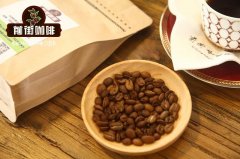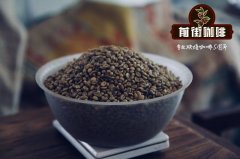What kind of utensils are suitable for washing Yega Sheffield Kongjia Pavilion by hand? is it good to make coffee in Kongjia Pavilion?

Professional coffee knowledge exchange More coffee bean information Please pay attention to coffee workshop (Weixin Official Accounts cafe_style)
Konga (also often translated as "Konga") is actually a cooperative in Ethiopia's Yejia Shefi coffee producing area (Konga Cooperative) Konga cooperative coffee beans but in recent years rose star If you go to Coffee Review website to type Konga search results, cup test scores higher than 90 points as many as 24 pens!
This year (2017), I scored a high score of 94 points. This time, let's introduce this super cooperative by a small coffee.
Konga Coop is one of the 26 cooperatives under The Yirgacheffe Coffee Farmers Cooperatives Union (YCFCU)(the familiar Fruit Ding Cooperative is also one of them).
YCFCU was founded in June 2002. 26 cooperatives are located in Gedeo region in southern Ethiopia. It is a very famous important coffee producing area in Ethiopia. Today, it represents more than 50,000 coffee farmers, that is, more than 300,000 families!
The Konga Cooperative was founded in 1994, and because of its proximity to the Konga River basin, it uses Konga as its name. The Konga Cooperative covers 1,556 small coffee farmers who cultivate coffee on an average of less than 1.25 hectares at altitudes of about 1800 to 2000 meters, mainly a mixture of Typica and native species (Heirloom).
What makes Konga special is the red soil where coffee beans are grown. Laterite is rich in Fe, and its thickness is up to 1.5m. Deep soil is rich in nutrients, and high iron content is also good for coffee beans, because iron is a micronutrient that helps plants produce chlorophyll, which is very helpful for photosynthesis, allowing plants to absorb more energy and make the fruit better. Laterite is undoubtedly one of the keys to Konga Co-op producing delicious coffee beans.
Kongjia Cooperative has its own washing treatment plant. The washing process is quite meticulous. Freshly ripe coffee cherries will be removed by peeling machine first, while the pulp and mucous membrane layer will be removed during fermentation. After fermentation process is completed, they will be washed with clean spring water to remove the fermented mucous membrane layer. In Konga, shelled beans are dried in shady elevated sheds for 10 to 12 days to reduce moisture to 12%. After that, the beans are moved to a warehouse where they are graded and packaged for sale to exporters, who then sell them to the international coffee market.
Kong's coffee beans, in addition to the typical fruit tonality, these several times we measured the washing batch, all have a very comfortable honey grapefruit tea flavor! The acidity is just right, with a little lime aroma, with blueberry sweetness, sour and sweet taste, is the charm of Kong family.
And the taste is clean, and it's easy to brew it in an American coffee pot. Some batches can also be traced back to specific smallholders to taste the different charms of Konga.
How to make yega sherry coffee?
Front Street Coffee Hand Brewing Reference: Weigh 15g of coffee powder, pour it into the grinder and grind it moderately. The ground particles are slightly coarser than salt. We use BG grinder scale 5R (standard sieve pass rate 60%), water temperature 90 ℃, V60 filter cup extraction.
The hot water in the hand-made pot draws a circle clockwise with the center of the filter cup as the center. The timing starts when brewing. The coffee is brewed to 30g in 15 seconds. Then stop filling water. When the time reaches 1 minute, fill water for the second time. When injecting water for the second time, as before, draw a circle clockwise around the center of the filter cup, and the water flow should not rush to the place where the coffee powder is connected with the filter paper, so as to avoid channel effect.
Coffee powder to the outermost circle to leave a circle, and then a circle to the middle brewing, 2 minutes and 20 seconds, coffee to 220g, brewing coffee is complete.
| Japanese ice hand punch [Kongka Kodokan]
Front Street Coffee Ice Hand Chong [Kongjia Restaurant] Reference:
Yejia Sherffy Coffee [Kongjia Xiaoguan], light medium roast, BG grinder scale 5M (standard sieve pass rate 67%)
20 grams of powder, 150 grams of ice, 150 grams of hot water. The water temperature is 91℃ higher than the normal hand flushing suggestion, and then 1℃ higher. The normal grinding small Fuji 3.5 scale, ice hand flushing is slightly finer by half a grid-small Fuji 3 scale.
Steaming water 40 grams, steaming time 30 seconds.
Water injection in stages, 60 grams of water in the first stage and 40 grams of water in the second stage. Use a relatively fine but high water injection column, stir the impact vigorously, so that the coffee powder fully tumbling, but be careful that the liquid level is not too high, do not rush to the edge of the filter paper.
The whole extraction time is also about 2 minutes and a half (with the normal extraction time of 20 grams of powder close).
END
Important Notice :
前街咖啡 FrontStreet Coffee has moved to new addredd:
FrontStreet Coffee Address: 315,Donghua East Road,GuangZhou
Tel:020 38364473
- Prev

Hand Flush Yega Shefi Ariza Coffee Flushing Technique Teaching_How to Hand Flush Yega Ariza
Professional coffee knowledge exchange More coffee bean information Please pay attention to coffee workshop (Weixin Official Accounts cafe_style) Ethiopia Yirgacheffe Ariza G1 washed/ Ethiopia Yirgacheffe Aricha Washed G1 Yirgacheffe is a star producing area of Ethiopian fine coffee beans, and also a coffee planting area at high altitude. It is close to mountains and lakes, and unique Yerga
- Next

2013 COE#1 champion El Salvador | Nicolas Nicholas Manor Pacamara Black Honey treatment
Professional coffee knowledge exchange more coffee bean information please follow the coffee workshop (Wechat official account cafe_style) 2013 COE#1 champion El Salvador | Nicolas Nicholas Manor Pacamara black honey processing flavor? Located in the Chalatenango province of El Salvador, close to the border of Honduras, in the veins of the Central American protuberance, at an altitude of 14501550m, cool throughout the year
Related
- Detailed explanation of Jadeite planting Land in Panamanian Jadeite Manor introduction to the grading system of Jadeite competitive bidding, Red bid, Green bid and Rose Summer
- Story of Coffee planting in Brenka region of Costa Rica Stonehenge Manor anaerobic heavy honey treatment of flavor mouth
- What's on the barrel of Blue Mountain Coffee beans?
- Can American coffee also pull flowers? How to use hot American style to pull out a good-looking pattern?
- Can you make a cold extract with coffee beans? What is the right proportion for cold-extracted coffee formula?
- Indonesian PWN Gold Mandrine Coffee Origin Features Flavor How to Chong? Mandolin coffee is American.
- A brief introduction to the flavor characteristics of Brazilian yellow bourbon coffee beans
- What is the effect of different water quality on the flavor of cold-extracted coffee? What kind of water is best for brewing coffee?
- Why do you think of Rose Summer whenever you mention Panamanian coffee?
- Introduction to the characteristics of authentic blue mountain coffee bean producing areas? What is the CIB Coffee Authority in Jamaica?

